Florida is well known for its sunny days, so many gardeners who live in the state are more familiar with gardening in full-sun conditions than in the shade. Although gardening in a shaded area may be difficult, the same principles still apply: choosing the correct plant for the right space. This article provides information about how to recognize and work with different shades of light and presents a list of shade-tolerant plants that can help brighten up your landscape.
Types of Shade
To create shady areas in your yard, you must first understand the amount of light that is present. Watch how the shadows move over the course of a day, and take note of how many hours of sunlight and partial shade you receive. Additionally, be aware of the intensity of the shade. Denser shade may be too dark for plants labeled as “shade tolerant” or “low-light.”
Light Shade — In Florida yards, there are some great plants that can tolerate less than four hours of direct sunlight (ideally during the cooler parts of the day), shifting shade from taller trees such as pines and partially mottled shade all day.
Deep Shade — For plants to thrive in Florida yards, the shade needs to be of a certain kind. The sun should be visible from the ground level, and the shade should not be created by buildings or fences. Additionally, the area should not be too wet, too dry, or have heavy roots. If the shade is too dense, even shade plants will not survive. For densely shaded areas created by buildings or fences, it may be better to focus on hardscaping than planting.
Micro Climates — When considering plants for a shady area of your Florida yard, it is important to bear in mind that these spots typically have their own microclimate and an abundance of roots. Due to this, it is best to choose species that prefer warmer climates and require small, shallow holes so as not to disturb the existing root system. It is also vital to recognize that plants need sunlight, and if they do not receive enough, they will become leggy and have sparse foliage. Fertilizer will not fix this problem, and the plant should be moved to a sunnier spot.
20 Great Shade Plants for Florida
If your shady spot shifts in and out of the sun, search for plants that can handle the change, such as flax lily. Dry areas need drought-resistant plants, so opt for plants like Devil’s Backbone. Include unique perennials with bright flowers or unique leaves, like a Jewel of Opar, to make your space stand out. Other shade-loving perennials that work well are ferns, crossandra, and gingers — there are plenty of varieties to choose from!
1. Begonia
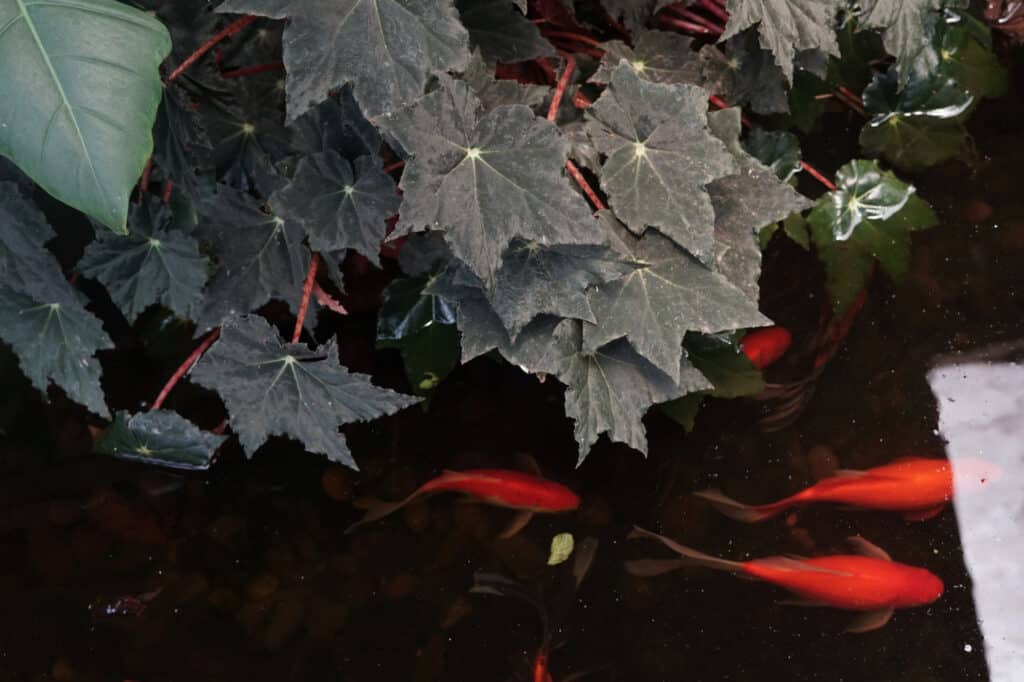
Thriving in multiple environments, begonias are a stand-out shade plant for Florida.
©waskitokw/Shutterstock.com
Begonias are a popular choice for gardeners in Florida. They are easy to care for and come in a variety of colors and shapes. To ensure healthy growth, begonias in Florida need at least four hours of direct sunlight each day. However, if the temperatures rise too high, it’s best to provide some shade for the plants. Begonias also thrive in humid environments, so regular misting can help keep them looking their best. With the right care and attention, begonias can bring a pop of color and texture to any garden.
2. Blue Ginger
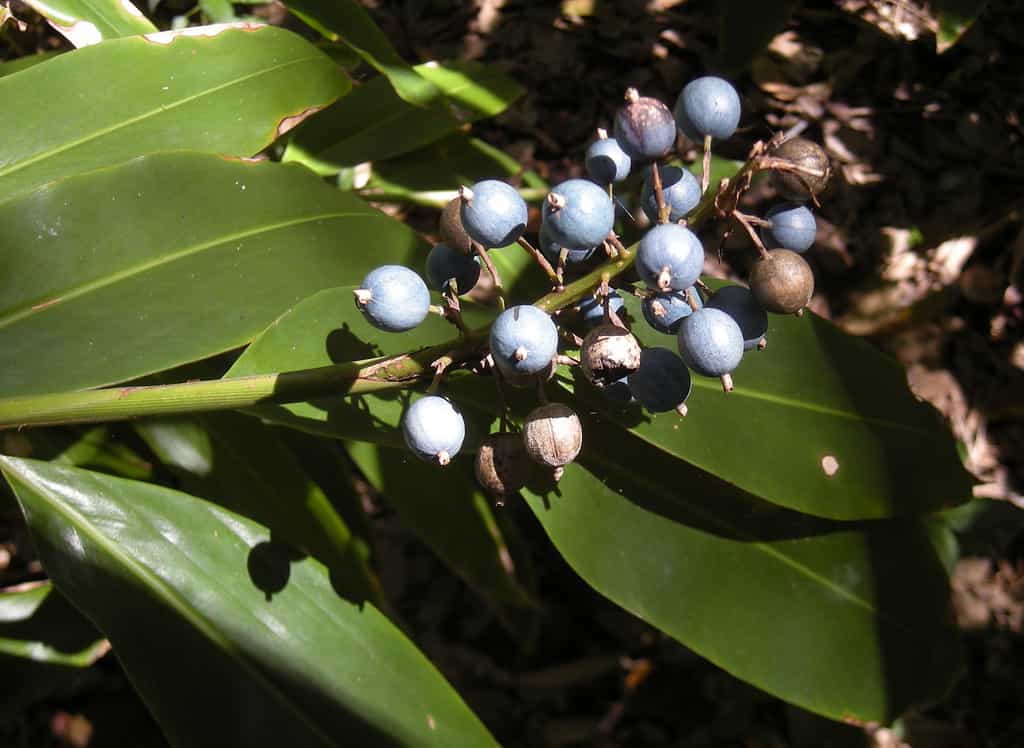
Alpinia caerulea fruit, Blue Ginger growing in Florida.
Blue ginger (Alpinia caerulea) is a tropical perennial plant native to India but can also be grown in Florida. It is an excellent choice for adding an exotic touch to your garden.
To grow blue ginger in Florida, plant it in well-draining soil in a location that receives partial to full sun. Blue ginger prefers moist, slightly acidic soil, so fertilize your plant with a slow-release fertilizer that is designed for acid-loving plants.
Make sure to water blue ginger regularly, as the soil should remain moist. Adding a layer of mulch can help retain moisture in the soil. Additionally, blue ginger will benefit from occasional pruning to encourage healthy growth.
3. Bromeliad
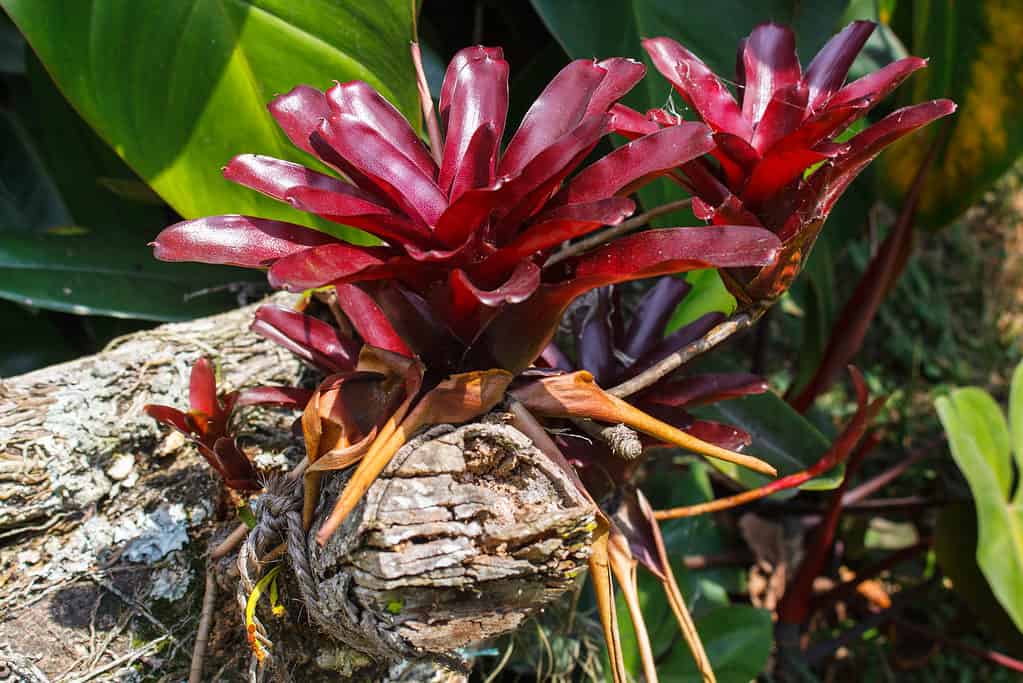
Deep red bromeliads look beautiful growing on a shady log.
©iStock.com/mdurajczyk
When growing bromeliads in Florida, the amount of sun or shade the plant needs is important. These plants prefer bright, indirect sunlight with temperatures around 80°F. If planted in full sun, they may become scorched. In areas with lower light levels, the colors of the foliage may become more muted. Bromeliads thrive in soil with good drainage and acidic pH. They should be watered well but not over-saturated. In general, they require more water in the summer and less in the winter months.
4. Caladium
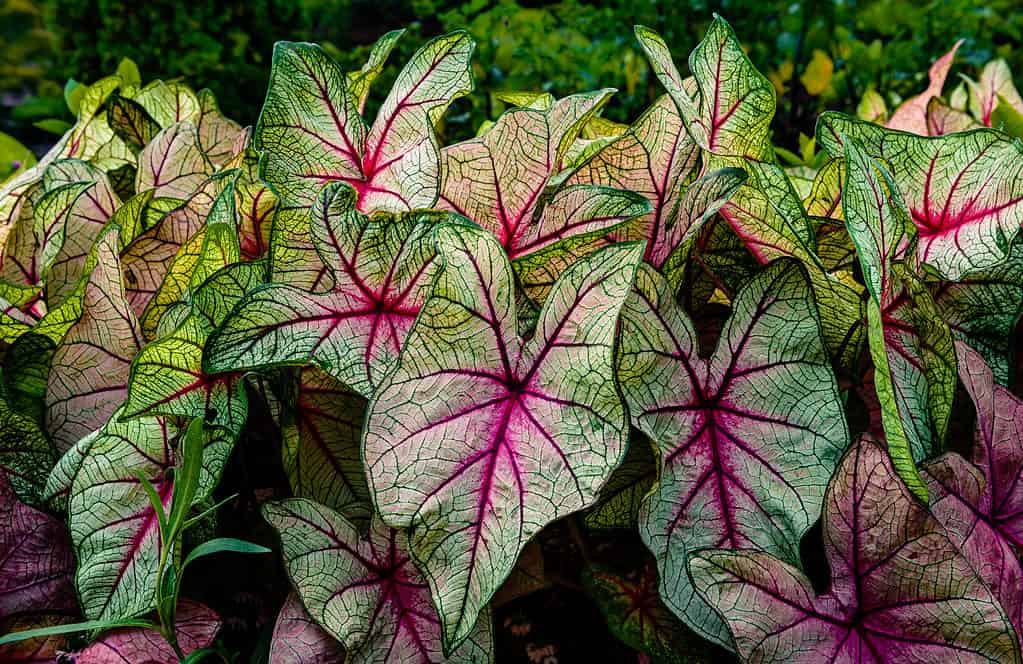
The caladium plant is also known as
elephant
ears.
©iStock.com/Licec
Caladiums are a popular choice for many Florida gardens. To grow them successfully, you’ll need to provide the right environment. Caladiums prefer warm, humid climates and need filtered sunlight. During the hottest parts of the day, they should receive partial shade. With proper care and maintenance, you can enjoy caladiums all year round.
To get started, plant your caladiums in well-draining soil. Water regularly, but don’t over-water, as caladiums are susceptible to root rot. Fertilize every two to three weeks with a balanced fertilizer to promote strong, healthy growth. Finally, make sure to remove any dead leaves to keep your caladiums looking their best.
5. Crossandra
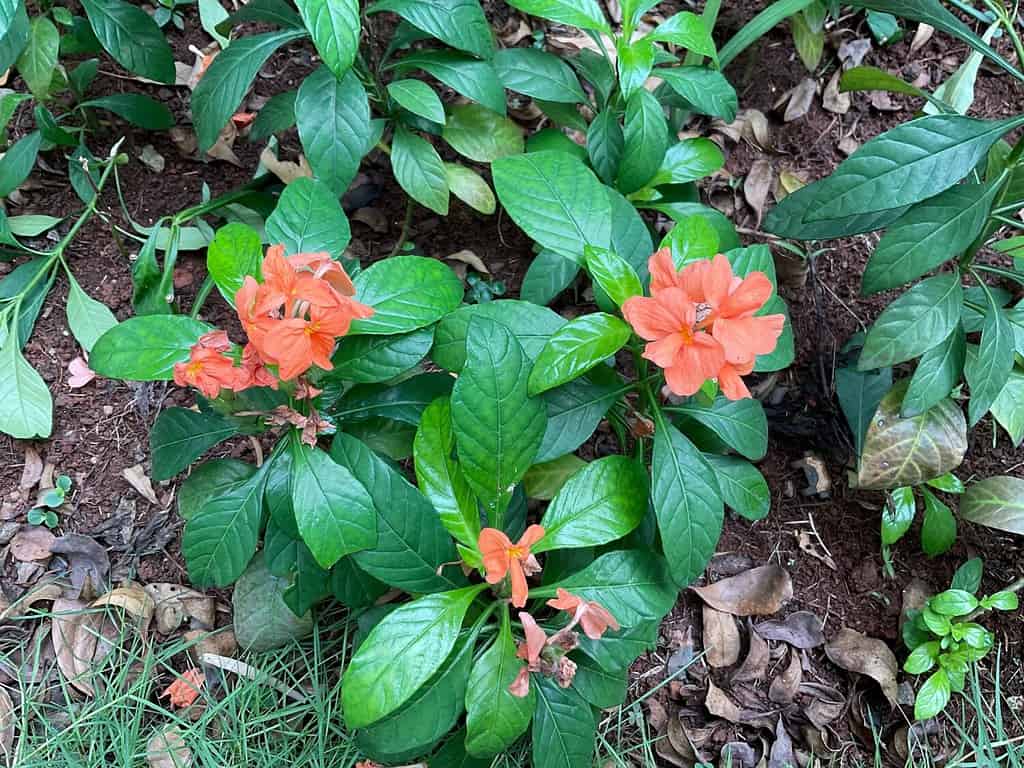
If you are looking for a shade plant for Florida, consider a flowering crossandra.
©Rati Siregar/Shutterstock.com
Crossandra infundibuliformis, also known as Crossandra, is a beautiful flowering plant native to South India. To successfully grow Crossandra in Florida, you should provide the plant with plenty of bright, indirect sunlight. It is not a fan of direct, hot sun. Crossandra prefers humid environments, so it’s important to keep the soil moist and mist the leaves regularly.
When planting Crossandra, make sure to provide it with well-draining soil and fertilizer. During the summer months, the plant will require more water, so keep the soil damp but not soggy. Crossandra is a relatively low-maintenance plant, so it should respond well to regular pruning and pinching to help it stay full and bushy.
6. Ferns
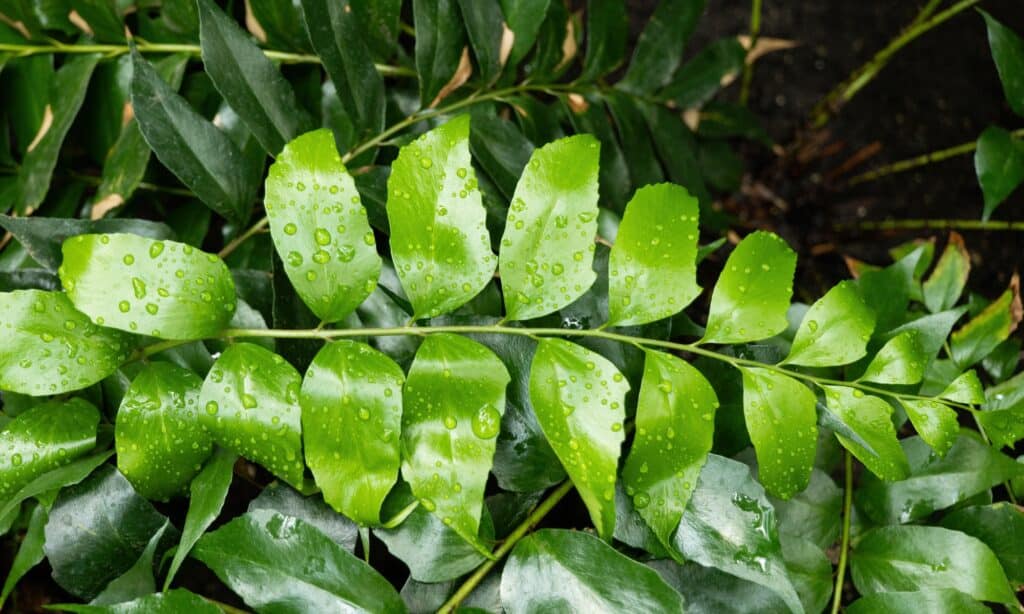
Holly ferns are great shade-loving plants for Florida.
©iStock.com/Artur Bogacki
Ferns such as sword ferns, tree ferns, staghorn ferns, holly ferns, and maidenhair ferns can make a great addition to Florida gardens. To successfully grow these plants, you must provide them with the right environment. Most ferns need partial shade to full shade and moist, well-drained soil. Sword ferns prefer a slightly sunnier environment, while staghorn and holly ferns are more tolerant of full shade. Maidenhair ferns require more sun and should be planted in a spot that gets morning sun and afternoon shade. With the right care, you can enjoy these lush plants in your Florida garden.
7. Mahonia
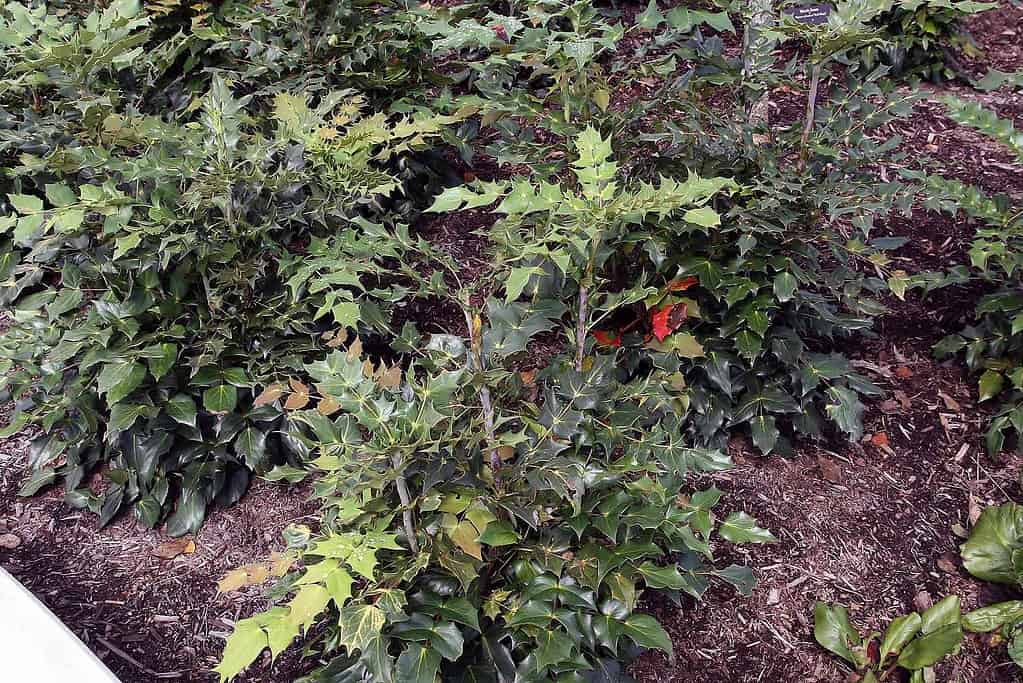
Mahonia bealei loves living in the shade in Florida.
To grow Mahonia fortune and Mahonia bealei in Florida, plant in well-draining soil in a partially shaded area. Mahonia fortune thrives in full sun to partial shade, while Mahonia bealei prefers partial shade to full shade. Water regularly and fertilize in the spring with a 10-10-10 fertilizer. Prune in winter to hold its shape and remove dead or broken branches. These plants are drought-tolerant and can survive in temperatures as low as 15°F.
8. Oakleaf Hydrangea
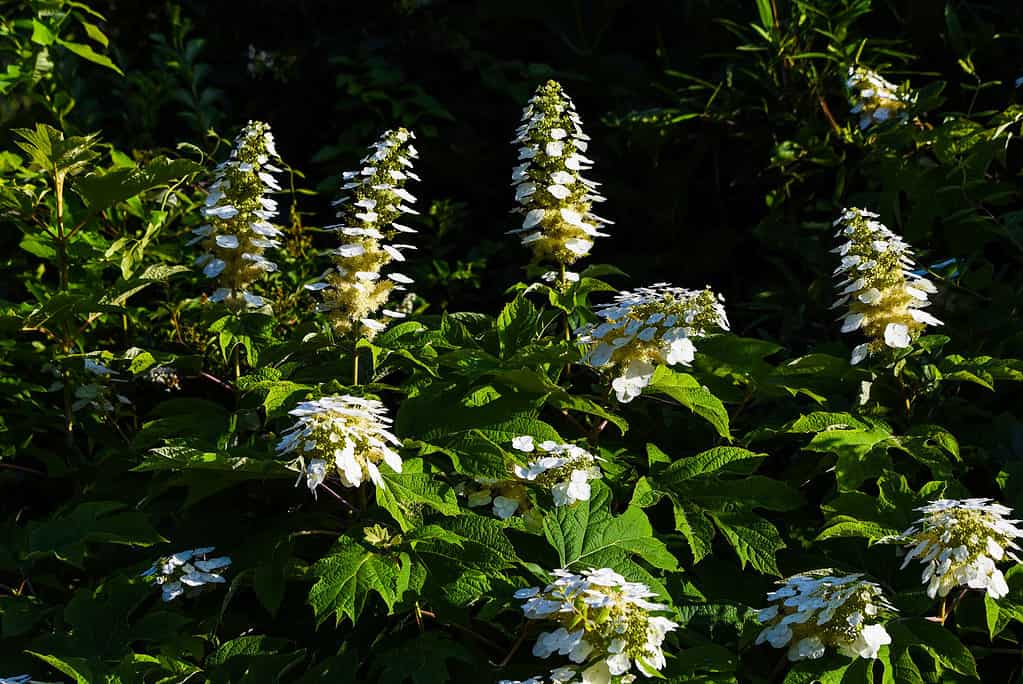
The oakleaf hydrangea is a plant you can grow in a dappled shade.
©iStock.com/undefined undefined
Gardening in Florida requires careful consideration of the unique climate and soil conditions. Fortunately, oakleaf hydrangeas are well suited to the warm, humid climate of the Sunshine State. To successfully grow an oakleaf hydrangea in Florida, provide the plant with partial shade or dappled shade throughout the day, as well as a steady supply of water. It is also important to choose a spot with well-draining soil, as oakleaf hydrangeas are susceptible to root rot. With the right conditions, you can enjoy a gorgeous hydrangea that grows up to 10 feet tall!
9. Peacock Ginger

Kaempferia pulchra is a shade-loving plant.
Peacock ginger is a beautiful and exotic plant that is native to Southeast Asia and grows best in humid, tropical climates. To successfully grow peacock ginger in Florida, you’ll need to provide plenty of moisture, humidity, and the right amount of sunlight.
The plant prefers partial sun to partial shade, so keep it in a shady area with indirect sunlight. If the plant receives too much sun, the leaves will begin to yellow and wilt. Therefore, it is important to pay attention to how much sun the plant is receiving and adjust the shade accordingly.
Peacock ginger also needs plenty of moisture and humidity to grow vigorously. Make sure to water the plant regularly and mist the leaves for added moisture. You can also place a tray of pebbles and water near the plant to ensure it is receiving the appropriate amount of humidity.
10. Sanchezia
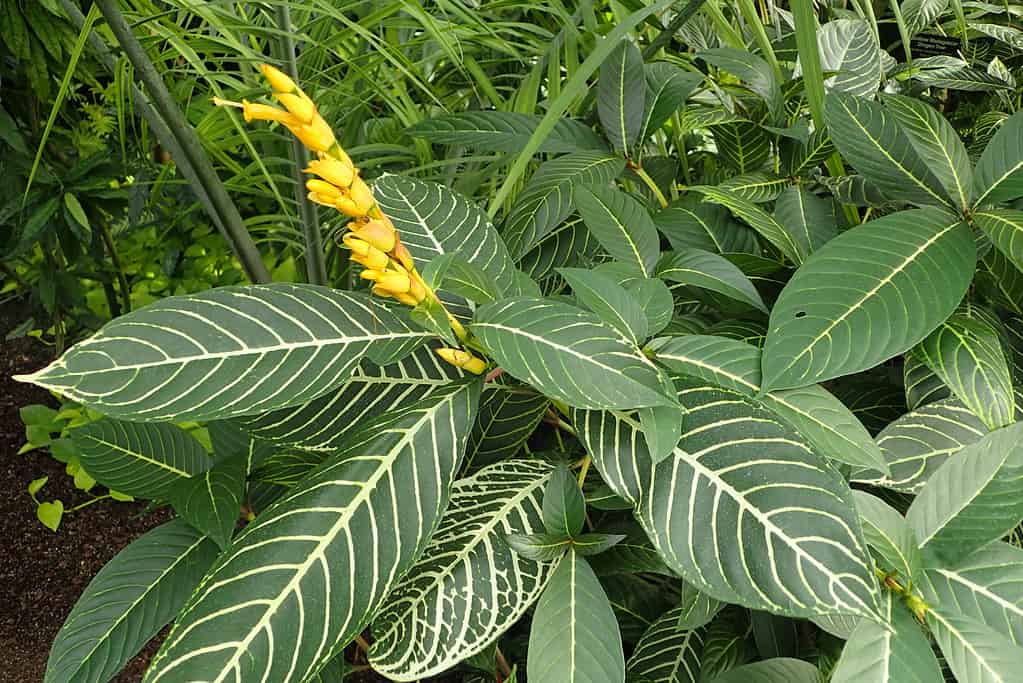
Sanchezia speciosa is an awesome plant that thrives in the shade.
©Krzysztof Ziarnek, Kenraiz, CC BY-SA 4.0 – Original / License
Growing Sanchezia in Florida is easy with the right conditions. The plant needs bright, indirect sunlight for at least 6 hours a day. The perfect site will have a bright dappled shade. Sanchezia also thrives in humid environments with temperatures between 65-85°F. To ensure healthy growth, make sure the soil has good drainage and is only slightly moist. If the soil is too dry or wet, the plant may struggle. Additionally, it is important to fertilize once per month to promote growth.
11. Persian Shield

Persian shield plant loves growing in the shade.
Growing Persian shield plants outdoors in Florida is easy! To get started, find a spot in your garden that gets between four and six hours of sun per day. This plant does best in partial shade, so keep it away from direct sunlight. When planting, add organic compost to the soil to improve drainage. Water the plants regularly and fertilize them once a month during the growing season for the best results.
12. Leopard Plant
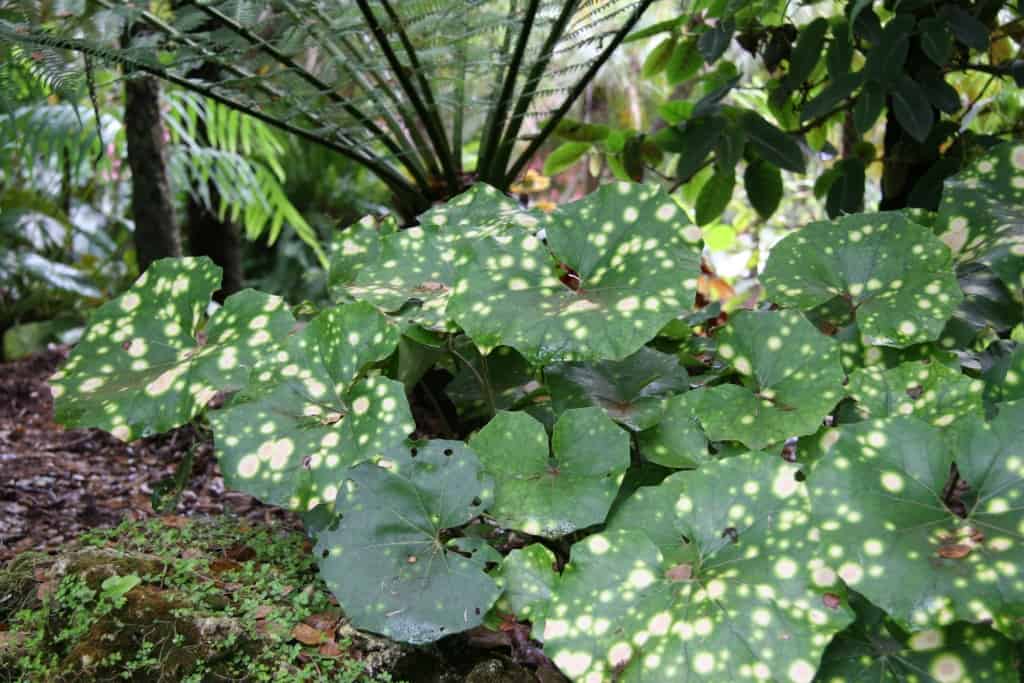
Farfugium japonicum is native to the state of Florida and thrives in the shade.
Leopard plants are easy to care for and can be grown outdoors in Florida with some basic instructions. To ensure your Leopard plant thrives in Florida’s climate, make sure it receives partial to full shade. Too much sun can damage the plant’s foliage, so avoid direct sunlight for long periods of time. To keep the soil moist, water the plant often and fertilize it regularly. Leopard plants are hardy, so they can tolerate some cold temperatures. However, if temperatures drop below freezing, cover the plant with a blanket or bring it indoors.
13. Asiatic Jasmine
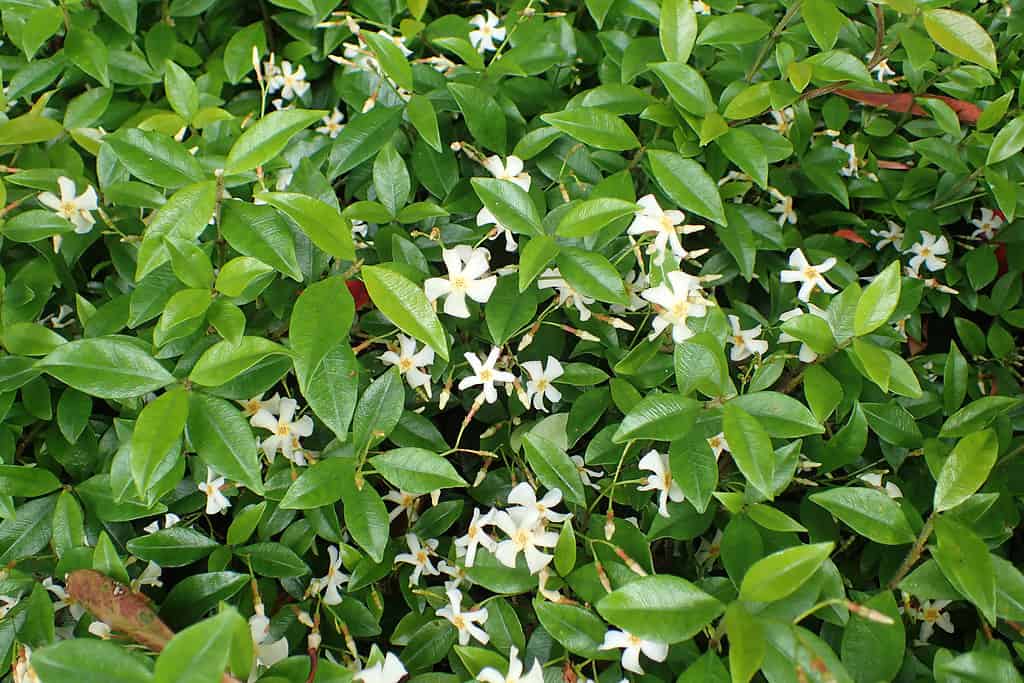
Trachelospermum asiaticum or Asiatic jasmine loves growing in the shade.
©Krzysztof Ziarnek, Kenraiz, CC BY-SA 4.0 – Original / License
Asiatic jasmine is a great addition to any Florida garden, and it’s easy to care for. It grows best in partial shade, so plant your jasmine in an area that receives at least four to six hours of indirect sunlight each day. It can also tolerate some deeper shade. With the right amount of sunlight, your Asiatic jasmine will flourish and provide your garden with a beautiful green ground cover.
14. Cast Iron Plant

Aspidistra elatior or cast-iron-plant or bar room plant will grow in sun or shade.
©mizy/Shutterstock.com
Cast iron plants are a great addition to any Florida garden. They are hardy and require little maintenance, thriving in both sun and shade. When planted in full sun, the plant grows quickly and produces deep green leaves. While in partial shade, the leaves remain a lighter green. The plant requires little water and will tolerate drought conditions. To ensure a healthy plant, fertilize it every two months with a balanced fertilizer.
15. Frog Fruit

Frog Fruit (Phyla nodiflora) has tiny white and purple flowers.
©iStock.com/seven75
Gardeners in Florida can enjoy the beauty of frog fruit (Phyla nodiflora) in their gardens. This versatile plant thrives in full sun or partial shade, making it an easy-to-care-for addition to any garden. With its succulent-like leaves, it can also serve as an attractive ground cover or border plant. To maximize its growth, plant it in well-draining soil and give it plenty of water.
16. Lyreleaf Sage
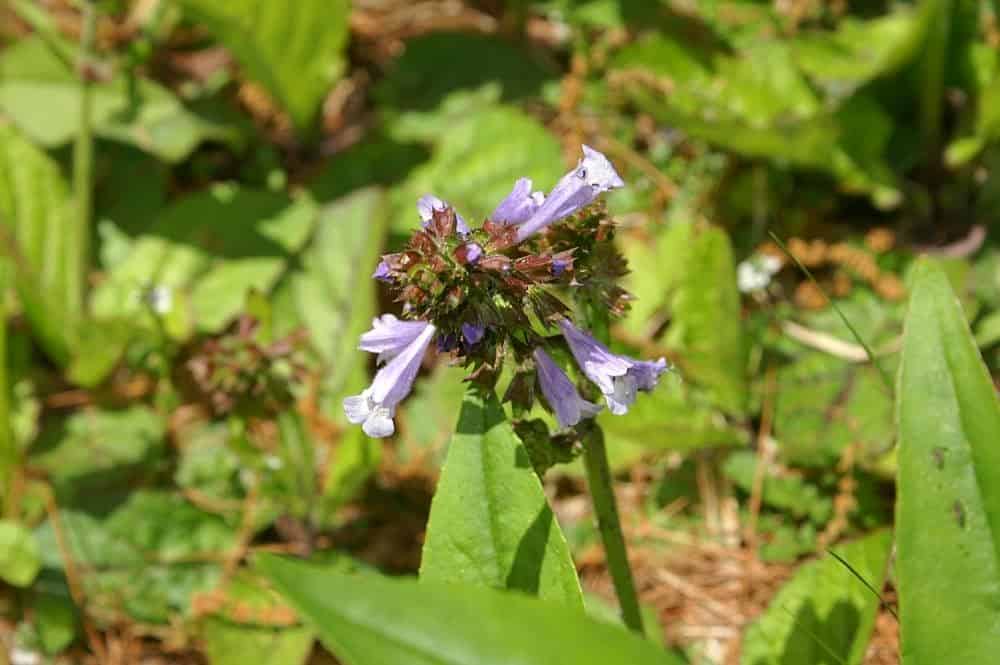
Lyreleaf sage or Salvia lyrata is a shade-loving ground cover plant ideal for Florida.
Growing lyreleaf sage (Salvia lyrata) in a Florida garden requires partial or full shade. This native wildflower thrives in moist, well-drained soil and can tolerate periods of drought. Lyreleaf sage is a great addition to any Florida garden, blooming with beautiful blue and purple flowers in late spring or early summer. To ensure the best possible growth and blooms, plant lyreleaf sage in a partially shaded area and keep the soil moist.
17. Mondo Grass
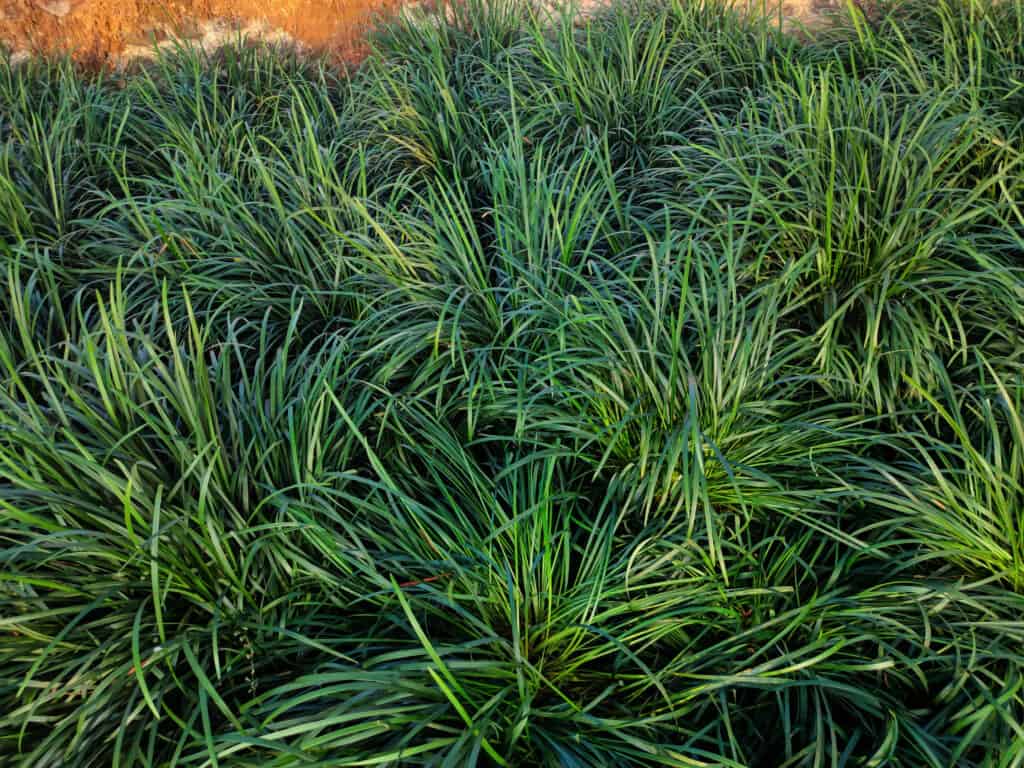
Ophiopogon japonicus is a wonderful ground cover that you can grow in the shade.
©iStock.com/vinodkumar Amberkhane
Mondo grass (Ophiopogon japonicus) is an easy-to-care-for and attractive ornamental grass that thrives in gardens in Florida. This low-growing grass does best in partial shade but can also tolerate full shade. It requires minimal maintenance, and you can easily divide it to create a larger patch. Mondo grass is also great for creating borders and edging pathways. To keep it in its best shape, make sure to water it regularly and fertilize it twice a year.
18. Partridgeberry
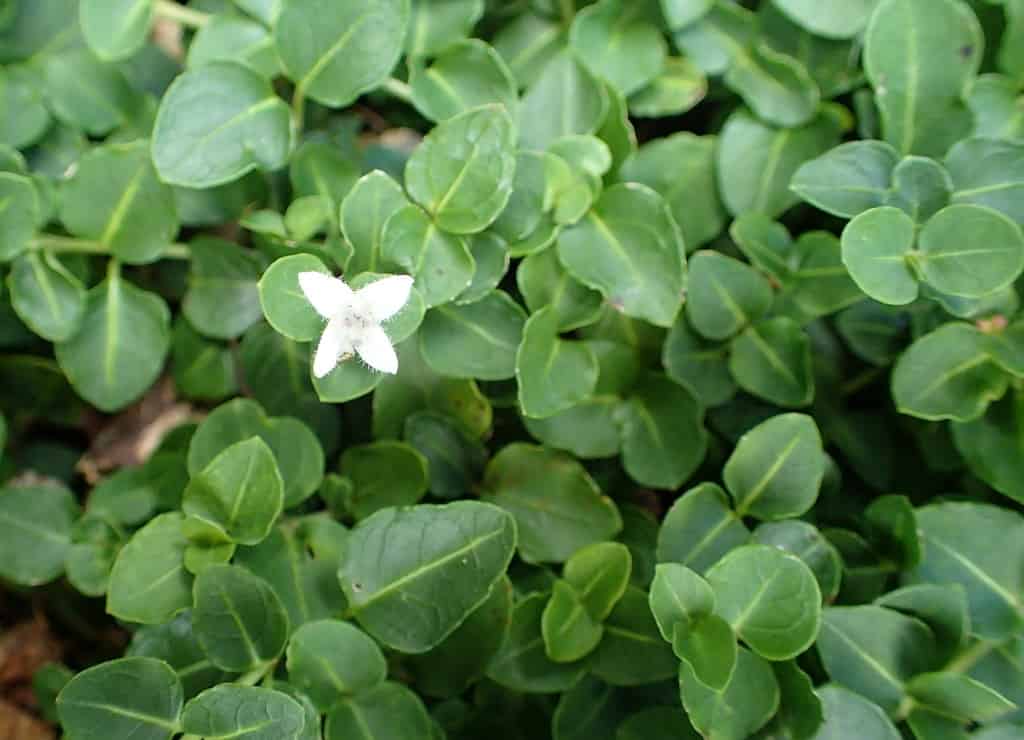
Common names for Mitchella repens include partridge berry, squaw vine, twin berry, two-eyed berry, running box, checkerberry, and teaberry.
©Krzysztof Ziarnek, Kenraiz, CC BY-SA 4.0 – Original / License
Partridgeberry, also known as checkerberry (Mitchella repens), is a beautiful, evergreen groundcover that is well-suited for Florida gardens. To ensure a healthy plant, place it in partial shade or dappled shade with moist, well-draining soil. It can also tolerate full sun but will require very frequent watering. Partridgeberry can spread quickly, so it’s best to contain it with edging or mulch.
19. Peperomia
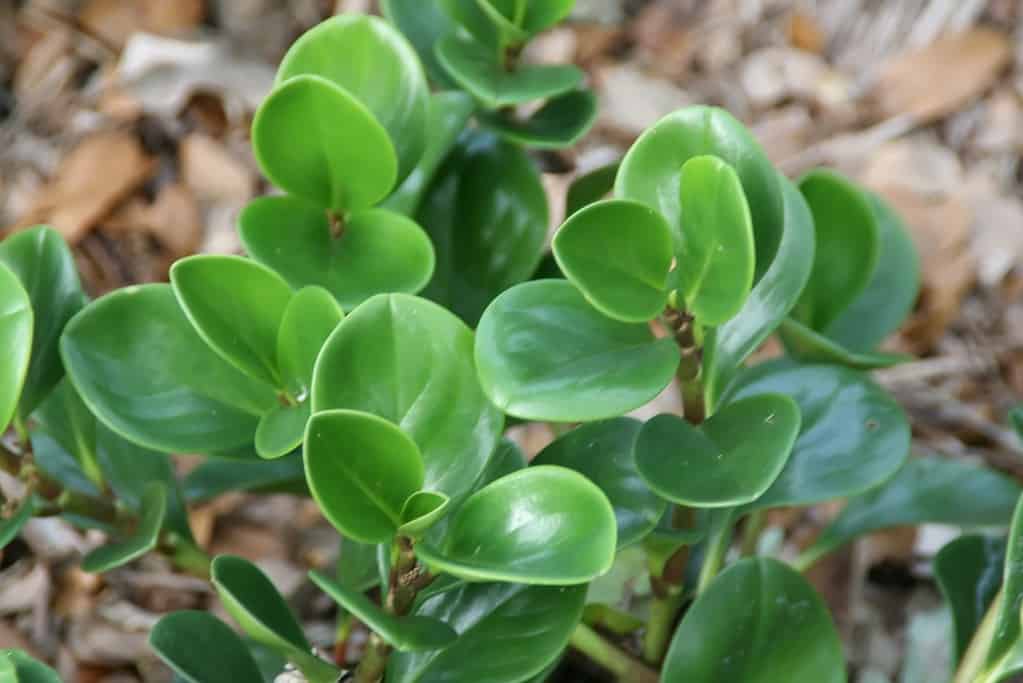
Peperomia obtusifolia is a shade plant for Florida.
Also called baby rubber plant, peperomia is a ground cover with round, smooth foliage, and dark green leaves. It flourishes in bright, indirect sunlight but should not be exposed to direct sunlight as this will slow its growth and diminish the vibrancy of its leaves. Peperomia is a tropical plant, so it is suitable for zones 10 through 11 and does well in both partial and deep shade. It generally reaches a maximum height of one foot and grows quickly into spreading clumps.
20. Twinflower
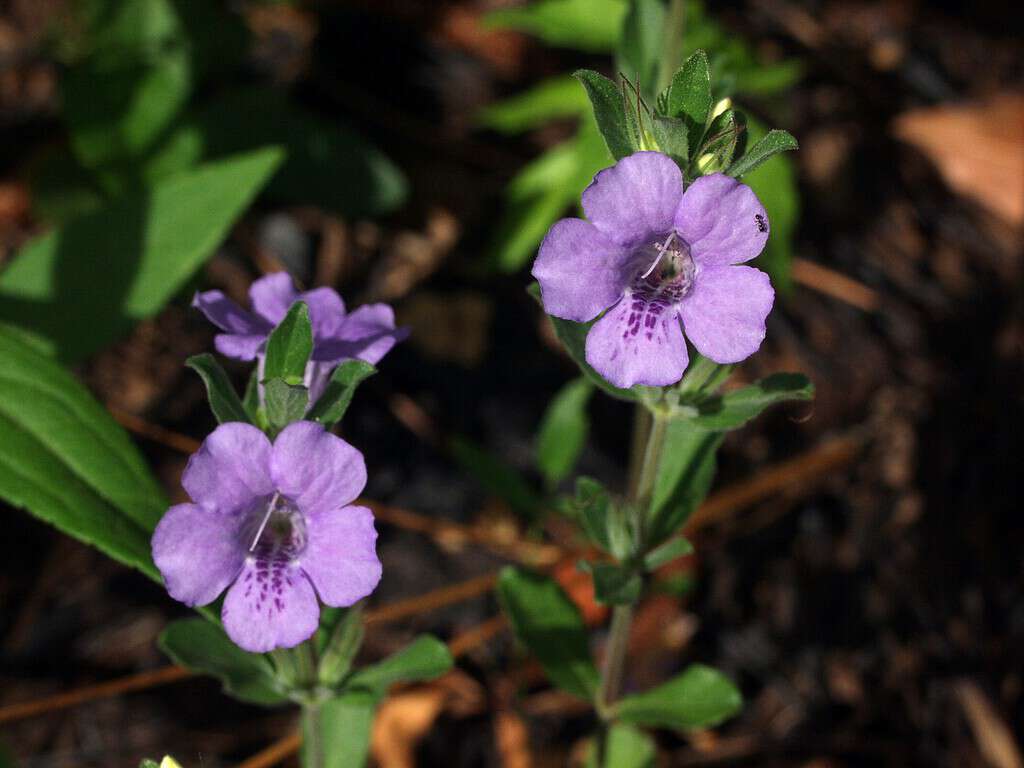
Dyschoriste oblongifolia, or twinflower, is a great shade plant for Florida.
©Mark A. Garland, Public domain, via Wikimedia Commons – Original / License
Twinflower is a native plant to Florida, boasting two purple blooms per stem. Growing anywhere between 6-12 inches, it has an airy appearance and is a great host for buckeye butterflies. If you live in zones 8-11, it’s best to plant twinflowers in an area that receives partial shade.
Summary of 20 Great Shade Plants for Florida Yards
| Plant | Type of Shade | |
|---|---|---|
| 1 | Begonia | Light Shade |
| 2 | Blue Ginger | Light Shade |
| 3 | Bromeliads | Light Shade |
| 4 | Caladium | Light to Deep Shade |
| 5 | Crossandra | Light Shade |
| 6 | Ferns | Light to Deep Shade |
| 7 | Mahonia | Light to Deep Shade |
| 8 | Oakleaf Hydrangea | Light Shade |
| 9 | Peacock Hydrangea | Light to Deep Shade |
| 10 | Sanchezia | Light to Deep Shade |
| 11 | Persian Shield | Full Sunlight to Light Shade |
| 12 | Leopard Plant | Light to Deep Shade |
| 13 | Asiatic Jasmine | Full Sunlight to Full Shade |
| 14 | Cast Iron Plant | Light to Dappled Shade |
| 15 | Frog Fruit | Light Shade |
| 16 | Lyreleaf Sage | Full Sunlight to Light Shade |
| 17 | Mondo Grass | Light to Deep Shade |
| 18 | Partridgeberry | Light to Dappled Shade |
| 19 | Peperomia | Light Shade |
| 20 | Twinflower | Light to Deep Shade |
The photo featured at the top of this post is © Joseph Sohm/Shutterstock.com
Thank you for reading! Have some feedback for us? Contact the AZ Animals editorial team.







